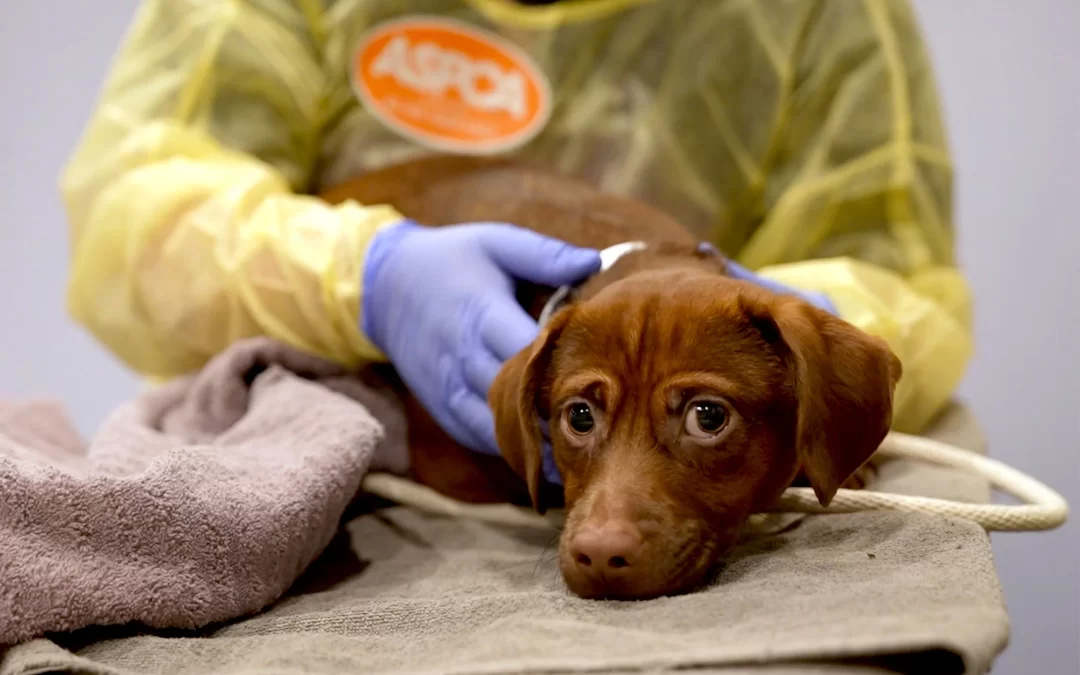There’s no question houseplants brighten up a home. When you have pets, choosing the best greenery takes some thought, however. Aside from picking plants for their appearance and care requirements, it’s also critical to learn whether they are dangerous for cats and dogs. Many will harm your pet if ingested—depending on the plant, your pet’s species, and the amount ingested, the effects can include drooling, vomiting, diarrhea, lethargy, tremors, and even death.
When in doubt, it’s better to be safe than sorry. Here are 15 common houseplants that are not compatible with your furry friends.
1. Aloe
Aloe is a popular specimen among plant lovers. This succulent is known to have medicinal properties for humans. However, pets who chew on its fleshy leaves will have an upset stomach at the very least. Digestive irritation can cause diarrhea and vomiting and even lead to tremors and lethargy.
2. Asparagus fern
This delightful fern is easy to look after and grows quickly. While its charm is evident as an indoor plant, your canine or feline friends can experience vomiting and diarrhea if they sample the leaves or berries. What’s more, rubbing against this plant can irritate your pet’s skin.
3. Cactus
Any cactus can pose a threat to animals. Dogs or cats who ingest the thorns on this plant will have injuries to their throat and elsewhere internally. Plus, the toxins may induce vomiting and their skin may become inflamed.
4. Caladium
Also known as elephant ear, this plant is stunning. That said, if your pet eats a leaf, their tongue and mouth will experience burning, and they may start to drool excessively and vomit. Be aware that caladium is poisonous for people as well.
5. Corn plant
The easy-to-grow corn plant is often selected to add greenery to a living space. Ingesting a part of this plant will result in vomiting for your cat or dog, and they’ll lose their appetite. For cats, other symptoms can include an increase in heart rate and breathing problems.
6. Chrysanthemum
This plant is abundant in fall gardens thanks to its colorful flowers, but keeping a potted chrysanthemum inside can tempt your pet to try eating it. If they do, vomiting and lack of coordination can ensue. Thankfully, if you stop them before they’ve eaten much, the affects are usually mild.
7. Daffodil
Springtime is when daffodils bloom, both indoors and outside. Be aware that if your cat or dog ingests any part of a daffodil, they may have abdominal pain, an abnormal heart rhythm, convulsions, diarrhea, and severe vomiting.
8. Dieffenbachia
This plant also goes by the curious name dumb cane. It’s prized as indoor greenery for being low-maintenance. Eating the leaves can cause your pet’s mouth and tongue to swell significantly, which can then make it challenging for them to breath and swallow.
9. English ivy
A burning throat, diarrhea, difficulty breathing, hyperactivity, staggering, tremors, vomiting, and general weakness are all symptoms that your canine or feline may experience if they ingest English ivy. This is a highly toxic plant.
10. Jade
The jade is a favorite with indoor plant lovers, partly due to its hardiness. The rubbery-leafed succulent is considered lucky to have in the home, but perhaps not so much for your pet. Munching on a waxy jade leaf may cause them to vomit, lose coordination, and be off-balance. Furthermore, their heart rate may slow.
11. Lilies
Though beautiful, a lily is one of the worst plants to have in your home if you have pets. Every part of this plant is toxic. Not only can lilies make your dog or cat lose their appetite, drool excessively and vomit, but eating them can result in renal failure and death—especially for cats.
12. Oleander
A pretty plant in many gardens that may be welcomed indoors for the winter is the oleander. These contain compounds called cardiac glycosides that can give rise to abdominal pain, abnormal heart rhythm, diarrhea, drooling, and neurological symptoms if your pet consumes the plant.
13. Peace lily
Peace lilies are not true lilies, instead belonging to the same family of plants that includes caladiums. However, peace lilies are still dangerous for cats and dogs if eaten in large amounts. Your pet may salivate incessantly and avoid food, experience diarrhea and vomiting, and become dehydrated. Seek veterinary treatment quickly to avoid kidney failure.
14. Philodendron
These common leafy houseplants contain calcium oxalate crystals, which are highly toxic for animals. If your pet eats enough of a philodendron, you may see them drool excessively, have diarrhea, vomit, and experience difficulty swallowing. Their lips, mouth, and throat will be irritated due to a burning sensation from the plant.
15. Sago palm
Here’s an attractive exotic plant that many people prize. However, be warned that any part of this tropical plant is dangerous for your pet—that means the leaves, roots, and seeds are all toxic. The most alarming outcome can be liver failure and death.
Choose pet-safe greenery
While these are not the only indoor plants that are harmful to cats and dogs, this list is a great start. If you’re unsure of any others, do your research first before you purchase to ensure your pet’s safety.

